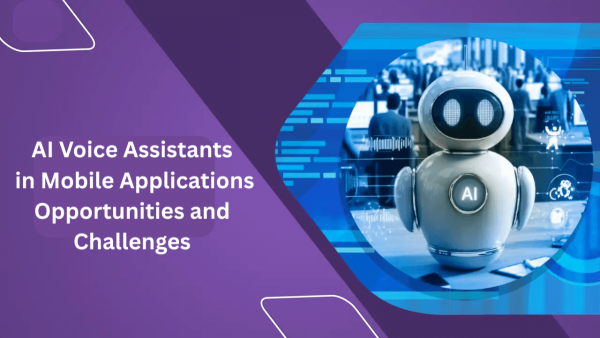
The Rise of AI-Powered Voice Assistants in Mobile Applications
The integration of AI-powered voice assistants into mobile applications has significantly transformed user interactions with digital platforms. According to Vishnuvardhan Reddy Goli in Journal (IJCET)with the growing adoption of systems like Siri, Alexa, and Google Assistant, businesses and developers are leveraging voice technology to enhance user experience. This shift has introduced numerous opportunities, improving accessibility, personalization, and efficiency, yet it also presents challenges to speech recognition, security, and ethical considerations.
Enhancing User Experience and Accessibility
AI voice assistants offer a seamless and intuitive user experience, enabling users to perform tasks such as sending messages, setting reminders, and searching for information through conversational interactions. This hands-free approach enhances convenience and accessibility, particularly benefiting individuals with disabilities. Voice technology has become an essential tool for users with visual impairments or motor disabilities, allowing them to navigate applications effortlessly. Additionally, AI-powered assistants improve efficiency and productivity by streamlining task completion, reducing the reliance on manual inputs, and enabling faster interactions.
Challenges in Speech Recognition and Privacy
Despite these advantages, integrating AI voice assistants into mobile applications presents notable challenges. Speech recognition accuracy remains a key concern, as background noise, diverse accents, and speech variations can impact the effectiveness of voice commands. While natural language processing has improved, AI assistants still struggle with understanding complex queries, slang, and ambiguous instructions, which affects their usability. Privacy and security concerns are also prominent, as users remain wary of data breaches, unauthorized access, and continuous voice recording. Implementing robust encryption, secure authentication, and transparent data policies is essential for building trust and encouraging adoption.
User Adoption and Ethical Considerations
User adoption is another challenge, according to Vishnuvardhan Reddy Goli as some individuals prefer traditional interfaces due to privacy concerns and the potential for misinterpreted commands. Effective voice user interface (VUI) design is crucial to ensuring a smooth and responsive interaction, as poorly designed VUIs can lead to frustration and reduced engagement. Ethical considerations, such as AI bias, data misuse, and potential surveillance risks, must also be addressed to ensure responsible AI deployment. Ensuring that AI models are trained on diverse datasets and implementing ethical data handling practices are necessary steps in mitigating these risks.
System Architecture and Development Frameworks
Developing AI voice assistants requires a comprehensive system architecture that integrates several key components: a voice input interface, a speech recognition module, a natural language processing (NLP) layer, an action execution engine, and a feedback mechanism. These elements work together to capture user input, interpret intent, perform tasks, and deliver responses in real time. Developers typically use platforms like Android Studio and Xcode for building mobile applications, while cloud-based services such as Google Cloud Speech-to-Text and Amazon Alexa provide advanced voice recognition capabilities. Core features including voice command handling, task automation, and real-time feedback are essential to ensuring the responsiveness and usability of AI voice assistants.
Performance Evaluation and Future Improvements
Performance evaluations indicate that AI voice assistants demonstrate high speech recognition accuracy in controlled environments, though their performance declines in noisy settings. Studies show that voice-driven applications can reduce task completion time by 20-30% compared to touch-based interfaces, particularly benefiting users with accessibility needs. However, addressing privacy concerns, improving AI training models, and optimizing VUI design remain essential for advancing voice assistant technology.
Maximizing AI Potential for Future Growth
To maximize the potential of AI voice assistants, developers must focus on enhancing AI training through diverse datasets to improve speech recognition across different languages and accents. Strengthening privacy measures through encryption and transparent data policies is necessary to build user trust. Refining voice UI design can further improve user experience by ensuring smoother interactions. Ethical considerations must also be prioritized by implementing unbiased AI training models and responsible data usage. Educating users on the capabilities, security measures, and best practices of AI voice assistants can further encourage adoption and trust.
Conclusion: The Future of AI Voice Assistants in Mobile Applications
Despite ongoing challenges, Vishnuvardhan Reddy Goli expresses optimism in the journal about the future of AI voice assistants in mobile applications. With steady progress in artificial intelligence, natural language processing, and cybersecurity, these technologies are expected to become more precise, dependable, and integral to everyday use. For businesses and developers, the emphasis must now shift toward strengthening security protocols, ensuring ethical deployment, and building user trust. By tackling these key issues and fostering innovation, AI voice assistants are poised to redefine digital interaction—making it more seamless, user-friendly, and impactful.